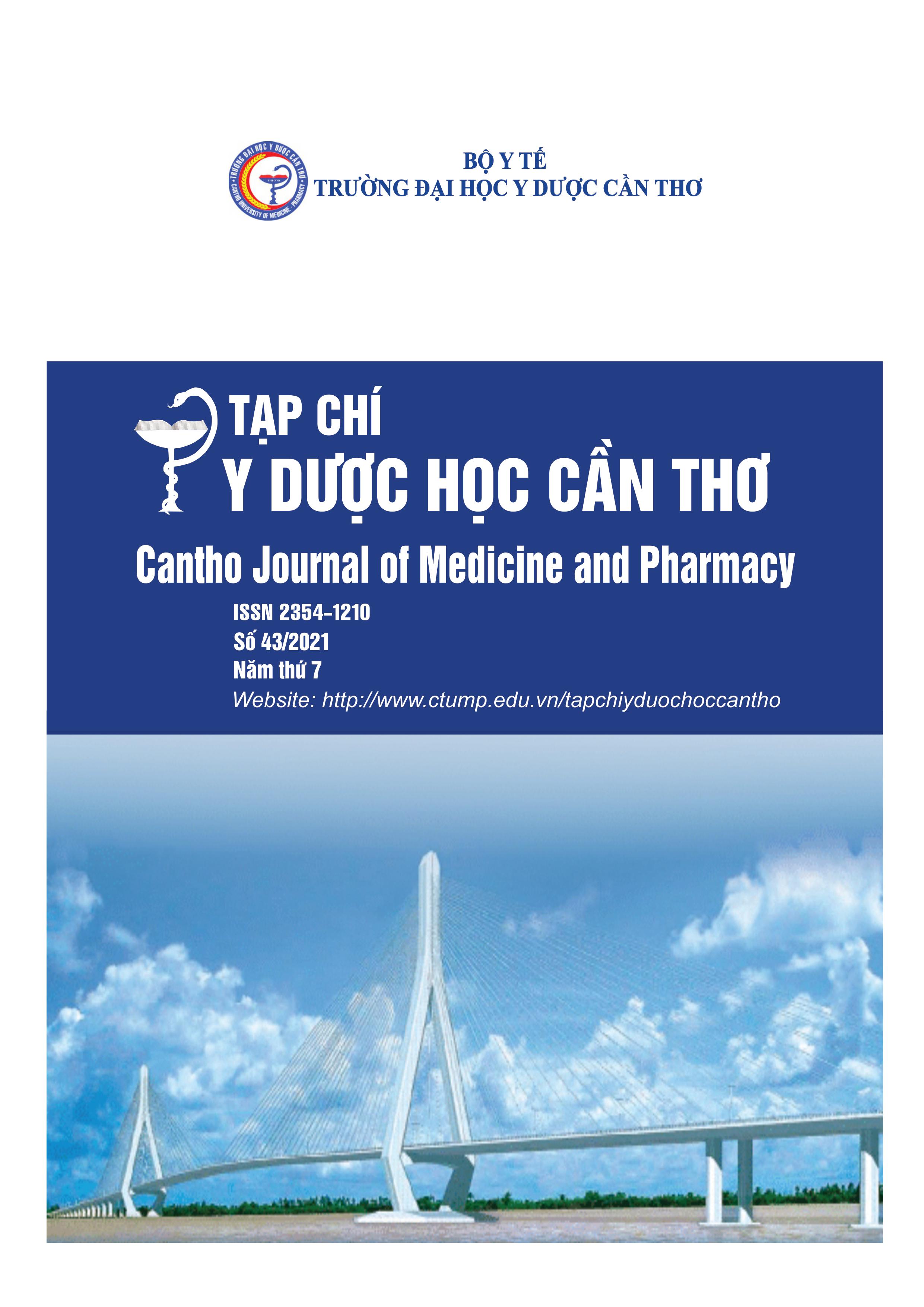THE RESULT OF BYPASS SURGERY FOR CHRONIC OCCLUSIVE ARTERIAL DISEASE OF LOWER EXTREMITY AT CAN THO CENTRAL GENERAL HOSPITAL IN 2019-2021
Main Article Content
Abstract
Background: The chronic occlusive arterial disease of the lower extremity is one of the main disastrous consequences on old patients. Bypass surgery is still one of the main methods for managing this disease. Objectives: Describe clinical and subclinical and the result evaluating of bypass surgical in the chronic occlusive arterial disease lower extremity. Materials and methods: Prospective, cases series describing, research is performed to describe 41 patients at Can Tho Central General Hospital 2019-2021 as age, gender, risk factors, clinical and paraclinical characteristics. Evaluate the result of bypass surgical. Results: There were 41 patients the chronic occlusive arterial disease lower extremity and were treated with bypass surgery. The mean age was 64.9 ± 13.99, the male/female was 9.25. Almost has high risk factor as hypertension 87.8%, diabetes 43.9%, lipid disorder 26.8%, and smoking 90.2%. 31% of them were admitted with necrosis of their foot, the others with pain on the foot 69%. There are 63.4% belong to classes III and IV with LericheFontaine. The ABI score is 0.102. All patients were in C and D class with TASC II classification. Femoropopliteal bypass operations were 61%, 17.1% of abdominal aorta bifemoral bypass, 19.5% of femorotibial bypass are 19.5%, and 2.4% axillofemoral artery bypass. The patency rate was 96,9%, and amputation was 3.1% (6.8 ± 6.37 month). Conclusion: Bypass surgery is the main method with good results in the chronic occlusive arterial disease lower extremity.
Article Details
Keywords
The chronic occlusive arterial disease lower extremity, bypass surgery
References
2. Nguyễn Lương Kỷ (2001), Nghiên cứu lâm sàng-cận lâm sàng và các yếu tố nguy cơ bệnh lý viêm tắc động mạch chi dưới, Đại Học Y Dược Huế, Huế.
3. Lê Phi Long (2005), "Đánh giá kết quả sớm phẫu thuật cấu nối điều trị tắc động mạch mạn chi dưới", Y học TP. Hồ Chí Minh, 9 (1), 27-32.
4. Lâm Văn Nút (2020), "Đánh giá kết quả can thiệp nội mạch điều trị tắc động mạch mạn tính dưới gối", Tạp Chí Phẫu thuật Tim mạch Và Lồng ngực Việt Nam, 21 (1), 17-23.
5. Nguyễn Duy Thắng (2018), Kết quả phối hợp phương pháp phẫu thuật phối hợp can thiệp nội mạch một thì trong điều trị thiếu máu mạn chi dưới, Đại học Y Dược Hà Nội, Hà Nội.
6. Nguyễn Thục (2020), "Kết quả điều trị viêm tắc động mạch chi dưới mạn tính ở bệnh nhân có bệnh lý mạch vành tại Bệnh viện Trung ương Huế", Tạp chí phẫu thuật tim mạch và lồng ngực Việt Nam, 21 (1), 107-112.
7. Ankle Brachial Index Collaboration (2018), "Ankle brachial index combined with Framingham risk score to predict cardiovascular events and mortality", A meta-analysis JAMA, 300 (1), 197-208.
8. Anton N Sidawy (2018), Rutherford's Vascular Surgery and Endovascular Therapy 9th, Elsevier, USA. Charles Brunicardi (2020), Schwartz’s Principles of Surge, Mc Graw Hill,
Ohio. 10. Elizabeth Selvin TPE (2004), "Prevalence of and Risk Factors for Peripheral Arterial Disease in the United States Results From the National Health and Nutrition Examination Survey", Circulation, 110 (7), 738-743.


